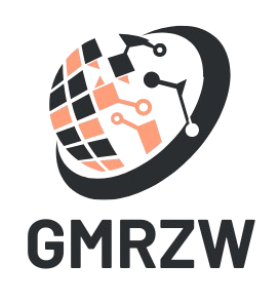Healthcare is undergoing a digital transformation, driven by advancements in technology that are reshaping the way care is delivered and managed. As we move into 2025, technology continues to revolutionize the healthcare landscape, making it more efficient, accessible, and personalized. From artificial intelligence (AI) streamlining diagnostics to wearables providing real-time health insights and telemedicine breaking geographical barriers, the future of healthcare looks brighter than ever.
This article explores how these key technologies will redefine healthcare in 2025, improving outcomes for patients and providers alike.
1. Artificial Intelligence: Transforming Diagnostics and Treatment
Artificial intelligence (AI) is one of the most transformative technologies in healthcare, poised to revolutionize diagnostics, treatment planning, and administrative efficiency. By 2025, AI’s integration into healthcare systems will become more widespread and impactful.
AI in Diagnostics
AI’s ability to analyze vast amounts of data quickly and accurately will make diagnostics faster and more reliable. Machine learning algorithms can identify patterns in medical imaging, such as X-rays, MRIs, and CT scans, often detecting anomalies that human eyes might miss.
For example:
- Cancer Detection: AI tools will identify early-stage cancers, such as breast, lung, and skin cancers, with remarkable accuracy.
- Neurological Disorders: AI systems will detect early signs of conditions like Alzheimer’s or Parkinson’s by analyzing brain scans and behavioral data.
Personalized Treatment Plans
AI will also enhance personalized medicine by analyzing patient data, including genetic information, lifestyle factors, and medical history. It will generate tailored treatment plans and predict how patients might respond to specific therapies. This will lead to improved outcomes and reduced trial-and-error in treatment.
Streamlining Healthcare Administration
AI-driven automation will reduce administrative burdens, from managing patient records to streamlining billing processes. Virtual assistants powered by AI will schedule appointments, remind patients of medications, and answer basic health queries, freeing up time for healthcare professionals to focus on patient care.
2. Wearable Devices: Real-Time Health Monitoring
Wearable devices have gained significant popularity in recent years, and by 2025, their capabilities will be more advanced and integrated into everyday life. These devices will empower individuals to take control of their health while providing valuable data to healthcare providers.
Advanced Health Metrics
Wearables in 2025 will go beyond tracking basic metrics like steps, heart rate, and sleep patterns. They will monitor:
- Blood Sugar Levels: Non-invasive glucose monitors will help individuals with diabetes manage their condition effortlessly.
- Blood Pressure and ECG: Devices will provide continuous monitoring of cardiovascular health, detecting irregularities early.
- Oxygen Saturation and Stress Levels: Advanced sensors will measure oxygen levels and stress indicators, offering a comprehensive view of overall health.
Early Detection of Health Issues
With AI integration, wearables will alert users and healthcare providers to potential health issues before symptoms arise. For example, wearable devices might detect signs of atrial fibrillation or respiratory infections, prompting timely medical intervention.
Enhanced Chronic Disease Management
For individuals with chronic conditions such as hypertension or asthma, wearables will offer real-time tracking and management tools. Alerts and reminders for medication, activity adjustments, or medical checkups will be seamlessly integrated into these devices.
3. Telemedicine: Bridging the Gap in Access to Care
Telemedicine has already proven to be a game-changer in healthcare, and by 2025, it will become an essential part of the healthcare ecosystem. Telemedicine platforms allow patients to consult with healthcare providers remotely, making care accessible to those in underserved areas.
Virtual Consultations
Virtual consultations will become more sophisticated, utilizing high-quality video, augmented reality (AR), and even virtual reality (VR) to enhance the experience. For example:
- Primary Care: Routine checkups, prescription renewals, and follow-ups will be conducted online, reducing the need for in-person visits.
- Specialist Access: Patients will consult with specialists regardless of geographical barriers, improving access to expertise.
Remote Patient Monitoring (RPM)
Telemedicine will incorporate remote patient monitoring, enabling healthcare providers to track patients’ health in real-time. For instance:
- Post-Surgical Care: Sensors and wearables will monitor recovery progress, reducing hospital readmissions.
- Chronic Conditions: Patients with conditions like heart disease or diabetes will have their health metrics continuously transmitted to their care teams.
Telemedicine in Rural and Remote Areas
By 2025, telemedicine will significantly reduce health disparities in rural and underserved regions. Mobile health clinics equipped with telemedicine technology will bring specialized care to remote communities, improving overall health outcomes.
4. The Internet of Medical Things (IoMT): A Connected Healthcare Ecosystem
The Internet of Medical Things (IoMT) refers to the network of interconnected devices, sensors, and software that collect and share health data. By 2025, IoMT will create a seamless flow of information between patients, providers, and healthcare systems.
Smart Hospitals
IoMT will transform hospitals into smart facilities where devices communicate to optimize patient care. Examples include:
- Connected Medical Equipment: Devices like infusion pumps and ventilators will be monitored remotely, ensuring accurate and safe operation.
- Automated Inventory Management: IoMT systems will track medical supplies, reducing waste and ensuring critical items are always available.
At-Home Health Monitoring
IoMT will enable patients to receive hospital-quality care at home. Connected devices will monitor vital signs, administer medications, and provide alerts in emergencies. This will be particularly beneficial for elderly patients or those with mobility challenges.
Data Integration and Analysis
IoMT devices will collect vast amounts of health data, which will be analyzed using AI. This data will provide valuable insights into population health trends, enabling public health interventions and personalized care strategies.
5. Ethical and Regulatory Considerations
While technology offers immense potential to improve healthcare, it also raises ethical and regulatory challenges. By 2025, addressing these concerns will be critical to ensuring trust and safety in the healthcare ecosystem.
Data Privacy and Security
With the increased use of digital health tools, protecting patient data will be paramount. Regulations like the General Data Protection Regulation (GDPR) and the Health Insurance Portability and Accountability Act (HIPAA) will evolve to address new challenges, ensuring data security and privacy.
Equity in Access
Efforts will be needed to bridge the digital divide and ensure that advanced healthcare technologies are accessible to all, regardless of socioeconomic status. Governments, non-profits, and private organizations will play a role in making healthcare technology equitable.
Ethical Use of AI
AI algorithms must be transparent and free from bias to ensure fair and accurate outcomes. Ethical guidelines will be developed to govern AI’s role in healthcare, ensuring that it enhances, rather than replaces, human judgment.
Conclusion: The Future of Healthcare in 2025
The healthcare landscape in 2025 will be defined by technology-driven innovation, making care more efficient, personalized, and accessible. AI will revolutionize diagnostics and treatment, wearables will empower individuals to take control of their health, and telemedicine will break barriers to access. Meanwhile, IoMT will create a connected ecosystem that integrates data from various sources to deliver better outcomes.
While challenges related to data security, equity, and ethics remain, collaborative efforts from stakeholders across the healthcare industry will ensure that technology is used to its fullest potential. The result will be a healthcare system that not only treats illness but also promotes overall well-being, paving the way for a healthier future for all.





